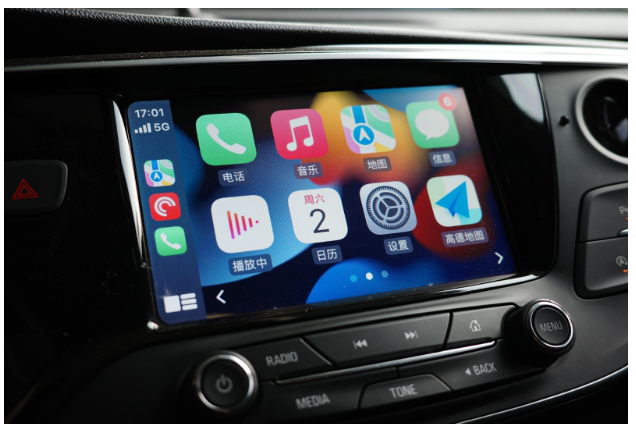Innovations in Air Quality Monitoring Technology for Seattle’s Environment
Air quality is a significant concern in urban areas like Seattle, where factors such as industrial activities, traffic congestion, and natural events like wildfires can contribute to poor air quality. Monitoring air quality is crucial for understanding pollution levels and implementing effective measures to protect public health and the environment. In recent years, advancements in technology have led to innovative solutions for air quality monitoring. This blog explores the innovations in air quality monitoring technology for Seattle’s environment, focusing on Seattle’s air quality, air quality maps, and the use of Air Quality APIs.
Understanding Seattle’s Air Quality
Seattle, known for its natural beauty and progressive environmental initiatives, faces unique challenges regarding air quality. While it generally enjoys good air quality, factors like regional wildfires, industrial emissions, and traffic pollution can contribute to periods of compromised air quality. Monitoring Seattle’s air quality is essential to identify pollution sources, track trends, and take appropriate actions to maintain clean air for its residents.
Air Quality Maps: Visualizing Air Pollution Data
Air Quality Maps play a vital role in presenting air pollution data in a user-friendly and visually engaging manner. These maps use color-coded overlays to represent air quality levels across different areas, allowing users to quickly understand the air quality in their vicinity. In Seattle, air quality maps provide real-time information on pollutant concentrations, including fine particulate matter (PM2.5), nitrogen dioxide (NO2), ozone (O3), and more. These maps enable individuals and policymakers to make informed decisions, such as modifying outdoor activities or planning routes to minimize exposure to polluted areas.
The Role of Air Quality APIs
Air Quality Application Programming Interfaces (APIs) have emerged as valuable tools for accessing and integrating air quality data into various applications and platforms. APIs provide developers with standardized access to real-time air quality information, enabling the creation of customized applications, websites, and services that incorporate air quality data.
In Seattle, Air Quality APIs allow developers to retrieve up-to-date air quality information, including pollutant levels, AQI (Air Quality Index) values, and health recommendations. This integration facilitates the widespread availability and accessibility of air quality data to residents, researchers, and policymakers
Sensor Technologies for Personal Air Quality Monitoring
Technological advancements have led to the development of portable and wearable sensors for personal air quality monitoring. These sensors allow individuals to monitor the air quality in their immediate surroundings and assess their exposure to pollutants.
In Seattle, these sensors can be used by residents, particularly those with respiratory conditions or concerns about air pollution, to gain insights into the air quality they encounter daily. The data collected by these sensors can also contribute to community-based monitoring efforts and provide valuable information for localized air quality improvement initiatives.
Satellite Imagery and Remote Sensing for Comprehensive Monitoring
Satellite imagery and remote sensing technologies offer a broader perspective on air quality monitoring. By capturing data from space, these technologies provide a comprehensive view of regional air quality, including the movement of pollutants and the identification of pollution sources. In Seattle, satellite imagery plays a significant role in monitoring air quality during regional wildfire events.
The data derived from these technologies help authorities and researchers understand the dispersion of smoke and identify areas with high pollution levels, allowing for targeted interventions and timely public health advisories.
Citizen Science and Crowdsourced Data
Citizen science initiatives and crowdsourced data collection have gained popularity in air quality monitoring efforts. Through smartphone applications and community-driven projects, residents can contribute to monitoring air quality by sharing real-time data from their location.
In Seattle, citizen science initiatives engage the public in monitoring air quality, enabling a more comprehensive understanding of pollution patterns and localized variations. This collaborative approach fosters community engagement, raises awareness, and supports evidence-based decision-making to improve air quality.
Advances in Data Analysis and Machine Learning
Innovations in data analysis and machine learning have enhanced the accuracy and efficiency of air quality monitoring. By analyzing large volumes of air quality data, machine learning algorithms can identify patterns, forecast pollution trends, and provide early warnings for potential air quality issues.
These advancements can help authorities and stakeholders make proactive decisions, such as implementing targeted emission reduction strategies or adjusting traffic patterns during peak pollution periods.
Integration of Weather Data for Enhanced Air Quality Monitoring
Weather conditions play a crucial role in air quality. The integration of weather data into air quality monitoring systems allows for a more comprehensive understanding of the factors influencing pollution levels.
Integrating weather data, such as temperature, wind speed, and humidity, enables the identification of weather-related pollution events and the assessment of their impact on air quality. This integration improves the accuracy of air quality forecasts and enhances the effectiveness of pollution mitigation strategies.
Collaborative Efforts and Partnerships
Innovations in air quality monitoring technology thrive through collaborative efforts and partnerships between government agencies, research institutions, technology companies, and community organizations. Collaborations between the local government, academic institutions, and technology companies have resulted in the development and deployment of cutting-edge air quality monitoring solutions. These collaborations ensure the availability of accurate and up-to-date air quality data and foster innovation for continued improvements in air quality monitoring technology.
Conclusion
Innovations in air quality monitoring technology have revolutionized the way we understand and address air pollution in Seattle. Air quality maps, Air Quality APIs, personal sensor technologies, satellite imagery, citizen science initiatives, and advancements in data analysis and machine learning have all contributed to a more comprehensive and accessible air quality monitoring system.
By harnessing these innovations, Seattle can make informed decisions, implement targeted interventions, and engage the community in efforts to protect public health and preserve the environment. Continued collaboration, research, and technological advancements will pave the way for further improvements in air quality monitoring, ensuring a cleaner and healthier future for Seattle residents.


